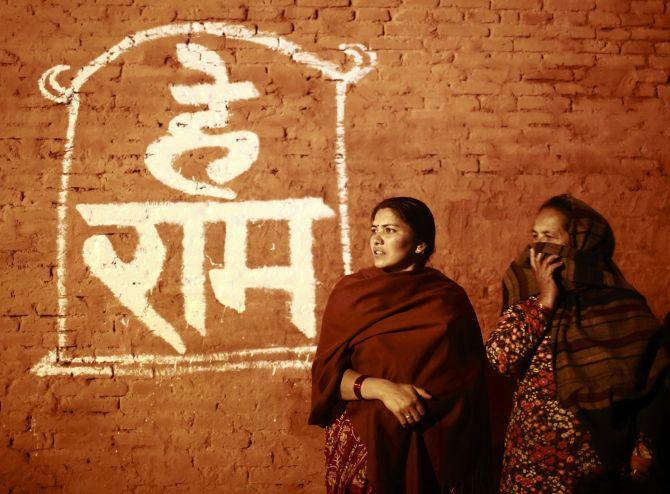'This evidence is important to solve the dispute.'
M I Khan reports.

A former Indian Police Service officer who claimed that the temple at Lord Ram's birthplace in Ayodhya was not demolished by Babur but during Aurangzeb's reign is keen to become a party in the case in the Supreme Court.
Kishore Kunal, who took voluntary retirement from the IPS in 2000, stated in his book Ayodhya Revisited that the temple in Ayodhya was demolished by Fidai Khan, the governor of Ayodhya, in 1660.
In 1990, Kunal was appointed officer on special duty to then Union minister of state for home affairs Subodh Kant Sahay. Thus started his association with the Babri Masjid-Ram Janambhoomi dispute.
"I will file a petition in the Supreme Court to become a party in the case related to the dispute. I will present rare evidence based on original sources in the apex court. This evidence is important to solve the dispute," Kunal said.

"I have collected solid evidence on the basis of several original sources -- including writings in Sanskrit, Arabic, Persian and by European travellers during the reign of Babur," Kunal, a 1972 batch IPS officer, said.
Currently, Kunal heads the Patna-based Mahavir Mandir Trust that manages the largest cancer hospital in Bihar, besides two other hospitals.
The trust plans to construct the world's largest Hindu temple near Kesaria in Bihar's East Champaran district.
"Babur had no role either in the demolition of any temple at Ayodhya or in the construction of the so-called Babri mosque," Kunal said. "He has been facing historical injustice for 200 years over an act with which he was not associated at all."
"I have made a serious effort on the basis of historical documents to absolve him of the charge of converting the temple into a mosque," Kunal added.
Many, Kunal said, will be surprised to learn that the so-called Babri mosque does not figure in any book for more than 240 years after its supposed construction in 1528. Its first reference appears in a travel account by Jesuit priest Joseph Tiefenthaler in 1768.
Be it Babur's memoir Baburnama, Humayunnama by Babur's daughter Gulbadan Begum, Abul Fazal's Ain-i-Akbari or Tuzk-e-Jahangiri, nothing is mentioned about Babur constructing a mosque in Ayodhya after demolishing a temple, Kunal said.
"The inscriptions inside the mosque, often quoted in books on Ayodhya or Babur, were fake. They were fixed in the mosque 280 years after its supposed construction in 1528," Kunal said.
Contrary to common belief, Kunal added, Babur never visited Ayodhya. He had no occasion to visit it. Similarly, Mir Baqi of the inscriptions is different from the Mir Baqi of the Baburnama and he was never the governor of Ayodhya.
According to Kunal, no person with the name Mir Baqi ever existed who had any historical importance.
"Babur was not a religious fanatic," Kunal said. "Two Maithili scholars-cum-priests have praised Babur. His visits to the Gwalior temples are testimony to his liberal outlook. Babur had no role either in the demolition of any temple at Ayodhya or in the construction of a mosque at the site. I have concluded it on the basis of incontrovertible information," Kunal said.
"For the first time I have established that there existed a temple at the disputed site on the basis of original evidence, including slokas on Ayodhya mahatmya of the Rudrayamala," he said.
"I have produced clinching evidence which conclusively prove that there was a temple at the birth place of Lord Ram and there was an idol inside it as it is described in the Rudrayamala," Kunal added.
Kunal said he has presented accounts from travelogues of foreign visitors like Thomas Herbert published in 1634 and Joannes De Leat published in 1631 on Ayodhya. Both mentioned a Ram temple in Ayodhya.
DON'T MISS the features in the RELATED LINKS BELOW...










